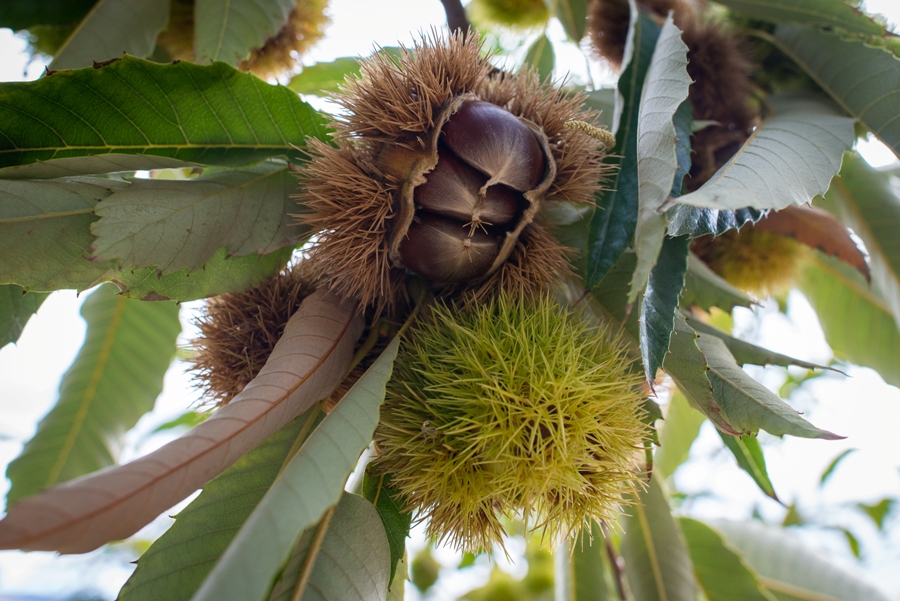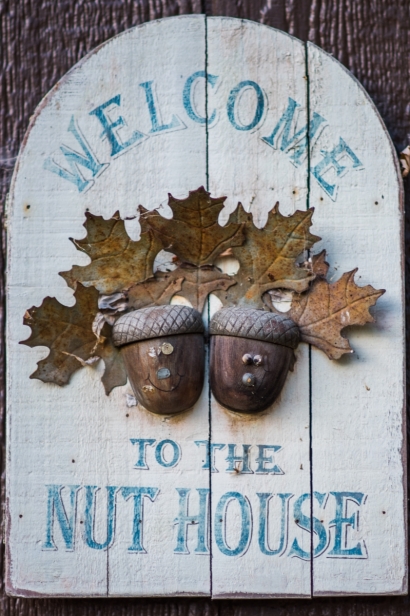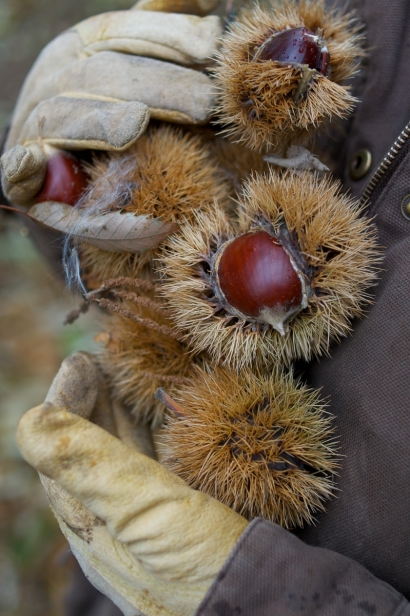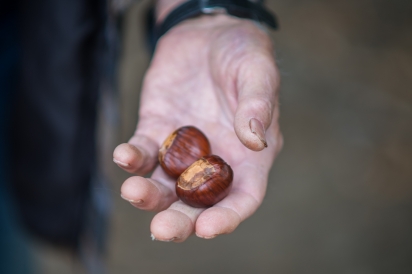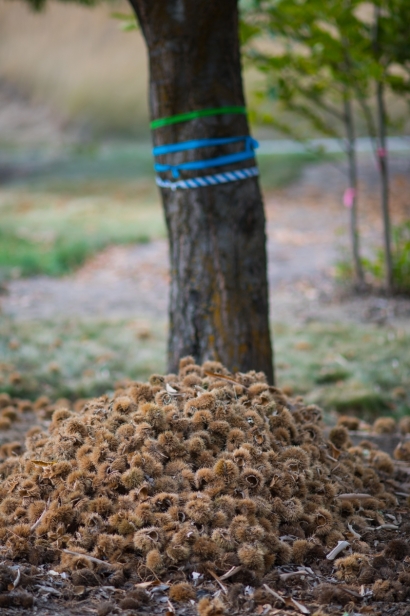Chestnut REVIVAL: Idaho growers work to bring beloved nut back from the brink
“I think we got a rainstorm coming in,” said Peggy Paul, pointing to the ominous band of clouds rolling our way on a blustery mid-November day in 2011. As she led me into the shelter of her nearby orchard, freezing rain began to tick against some of its 500 chestnut trees. Those trees both protected us from the storm and—with their storybook tangle of interlocking branches—reminded me of a fairy-tale forest far more than the commercial orchard it was.
Sadly, American chestnuts slipped from reality to fairy tale nearly a century ago. Up to 4 billion trees fell victim in the 1930s and ’40s to a blight that erased the species from its native habitat. That’s why the majority of Americans today experience the chestnut only vicariously, through that 1946 chestnut of a ballad, “The Christmas Song,” with its opening reference to “chestnuts roasting on an open fire.”
“These are Colossal chestnuts,” Paul said of the very real variety that surrounded us on that stormy day. “This is a strain of chestnut that has been crossed with a domestic nut and a Chinese chestnut. They’re blight-free chestnuts.”
With the relatively recent development of disease-resistant stock, new strains of chestnuts are being introduced into its historic Eastern U.S. habitat, as well as into entirely new territory, like Paul’s commercial orchard near Nampa.
“I, along with a lot of growers within the Northwest and the Midwest, am trying to bring chestnut trees back to the United States,” said Paul. But that ambitious goal hasn’t been easy. Three Novembers after I met with her, a hard, unseasonable freeze decimated her chestnut orchard. A quarter of her trees were killed and the remainder suffered heavy damage. Last year she harvested a measly hundred pounds of nuts from her surviving stock. But this year things are looking up: She collected 4,000 pounds and began selling them, as she had before, at the Boise Co-Op and Winco.
That same 2014 freeze also hit Bruce and Linda Reay’s orchard near Horseshoe Bend, the only other commercial chestnut farm in Idaho.
“I lost a third of my trees,” Bruce Reay said as we walked through his surviving chestnuts in October 2016. Another third were partially damaged. But the remainder came through unscathed.
Reay believes those trees survived because of the biodiversity he built into them from the start. In 2000, when he began planting, he used seedlings sprouted from individual nuts rather than the more common orchard practice of buying grafted clones. “So each individual was genetically different,” he said, and therefore not uniformly vulnerable to a killing freeze.
Biodiversity may have saved most of Reay’s orchard, but it continues to complicate his life: Since each tree is genetically unique, each behaves differently.
“As you walk through the orchard,” he said, “you’ll see that I have trees marked with different colored ribbons and that’s because I keep track of their production on an annual basis. I know which trees are the best producers, which ones are the easiest to get the nuts out of the burr, the size of the nuts and so on. I’ve got those trees pretty much memorized by now.”
Reay walked up to a pile of burrs that he’d raked into a mound under one of his most prolific trees (you don’t harvest chestnuts until the brown, porcupine-quilled burrs containing the nuts fall to the ground). With gloved hands, he pulled open a burr to reveal three shiny chestnuts. Reay harvests all of his chestnuts by hand, often sitting under a tree, shucking each burr one at a time. Needless to say, he’s not a high-volume producer, harvesting between 2,000 and 3,000 pounds a year and selling them to folks who visit his farm or his modest website.
“The biggest drawback of raising chestnuts is a limited market,” Reay said. “People don’t know how to use them, how to eat them. The local population in our country has lost what it is like to use a chestnut. So our customers, in this day and age, are primarily ethnic groups. For example, the Bosnian refugees in the Boise Valley. They’re big chestnut eaters and they buy a lot of chestnuts from me.”
For those of us lacking what he calls “a chestnut culture,” Reay offers more ways to cook them than roasting them over that lyrical open fire.
“You can put them in anything from ice cream to a salad,” he said as spent burrs crunched under our feet. “One of our favorite recipes is chestnuts sautéed with Brussels sprouts.” (The thought of that one brought a smile to his face.) “My wife puts them in cookies, puts them
in bread, stews, soups; she candies them and dips them in chocolate.”
As Bruce Reay reeled off recipes, he peeled open a couple of raw chestnuts and handed one to me. It was golden, had a sweet, nutty flavor
and the satisfying crunch of an oversized filbert. We may not have a chestnut culture just yet—and we certainly have endured setbacks trying to create one—but here, a few Idaho farmers are still working on it, a handful of chestnuts at a time.


